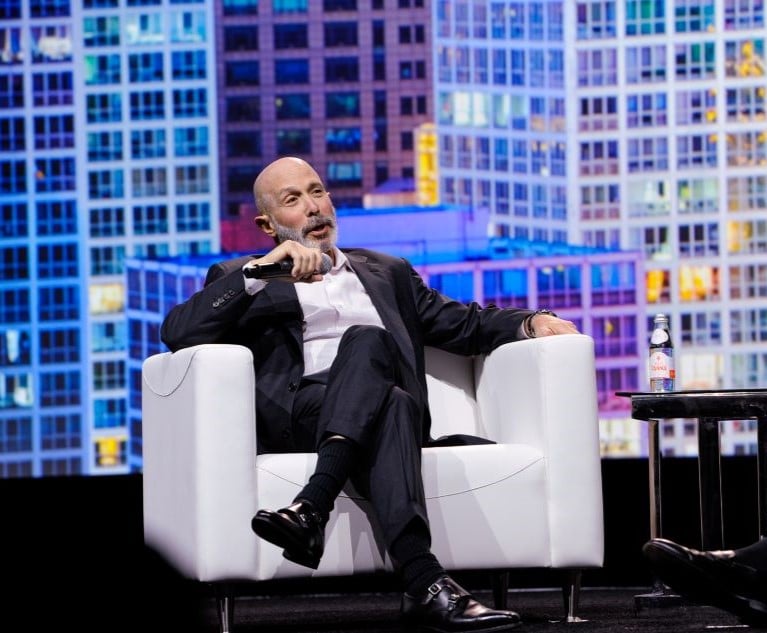(Bloomberg) — American International Group Inc.'s bailout by theU.S. in 2008 was seen by the company's board as its only rescueoption at the time, former Chief Executive Officer RobertWillumstad testified.
|The insurer's board acted in "the best interest of all thestakeholders of AIG" when it approved an $85 billion loan requiringit to surrender 80% of AIG's equity and pay a 14% interest rate,Willumstad said in the trial of Maurice "Hank" Greenberg's lawsuitchallenging the rescue.
|The board voted for the loan deal after exhausting private-sector lifeline possibilities that included discussions with WarrenBuffett, Jay Fishman of Travelers Cos. and J.C. Flowers & Co.,Willumstad told the court. A last-minute private bank bailout ledby JPMorgan Chase & Co. and Goldman Sachs Group Inc. alsodidn't pan out, he said.
|John Roberson, a Justice Department lawyer who called Willumstadto testify, asked him what AIG's alternative was to accepting thegovernment's offer.
|"Bankruptcy," he replied.
|Willumstad's testimony Nov. 5 in federal court in Washingtoncame in the sixth week of the trial over claims by Greenberg'sStarr International Co. that AIG shareholders were cheated in thedeal. The government used authority it didn't have to demand equityand inflicted economic losses through the high interest and thestructure of certain transactions, Starr alleges.
|Government witnesses have said the deal was legal andvoluntarily accepted by the board, a point Willumstad acknowledged— with a hedge.
|Board's Approval
|Asked by Roberson whether the board approved the terms of thebailout "freely and voluntarily," Willumstad responded, "I'm notsure what you mean by freely, but I'd say voluntarily, yes."
|Willumstad, 69, testified that "there's certainly some truth" tothe contention that AIG didn't have a sure handle on its cashrequirements and that it underestimated the amount of money itultimately needed.
|That bolstered the government's argument that one reason for theharsh terms was the murkiness of the company's finances.
|Willumstad described a series of unsuccessful efforts to raisecash after a ratings downgrade, declining asset values and otherfinancial setbacks led to a soaring demand for liquidity.
|Buffett declined to invest in AIG and told Willumstad that the$25 billion asking price for the company's property and casualtybusiness "would be too large a transaction at that time,"Willumstad said.
|Flowers's Intent
|J.C. Flowers, J. Christopher Flowers's leveraged-buyout firm,wanted to acquire the entire company for "a couple of dollars ashare," a proposal Willumstad said he didn't take seriously. "Nordid the board," he said.
|A possible deal with Fishman, chairman and CEO of Travelers, tobuy AIG's personal lines of insurance businesses for $7 billionfoundered because they were too financially entangled with othercompany properties, Willumstad said.
|That left the government, which already had rebuffedWillumstad's requests for low-interest financing.
|Willumstad testified that after receiving a paper copy of thegovernment's rescue offer on Sept. 16, 2008, he took a call fromthen-Treasury Secretary Henry Paulson and Timothy Geithner, at thetime the head of the Federal Reserve Bank of New York. He saidGeithner told him the conditions delivered to AIG "were the onlyterms we were going to get."
|Then Paulson got on the line and told him that "one of theconditions was that I would be replaced as CEO," Willumstadtestified. Paulson told him that Edward Liddy, a former AllstateCorp. CEO, would be his successor, said Willumstad, who is nowchairman of Adelphi University in Garden City, New York.
|Starr's Lawyer
|David Boies, Starr's lead attorney, is set to cross-examineWillumstad today before U.S. Court of Federal Claims Judge ThomasWheeler, who is hearing the case without a jury.
|Earlier yesterday, Marshall Huebner, a lawyer for the New YorkFed, concluded his testimony, much of it covering the legalreasoning for the structure of parts of the bailout.
|Demanding that AIG provide preferred shares instead of warrantsfor common stock as originally contemplated allowed the New YorkFed to head off de-stabilizing challenges to control of the companywhich might have undermined the government's goal of calming theeconomy, Huebner testified.
|Starr asserts that the switch was made to avoid accountabilityto shareholders for the onerous terms of the rescue.
|AIG directors served only one-year terms and service was notstaggered, meaning directors were at a "relatively high risk ofbeing fired in one shot," Huebner said.
|Preferred Shares
|That made it imperative for the government to claim itscontrolling interest, something that could be most quickly done bygetting preferred shares, which didn't require a shareholder voteor any other action beyond board approval, he said.
|"You could sculpt the preferred to what the board wants,"Huebner told the court.
|Huebner also testified that the New York Fed sought to strike abalance between limiting involvement in AIG while protectingtaxpayer investment in the company.
|"The Fed didn't want to have intrusive or unworkableinvolvement," said Huebner, of the law firm Davis Polk &Wardwell LLP.
|"'Not controlling' was continually a pulsating thought we kepthearing from our client," Huebner said under questioning by ScottGardner, a Justice Department lawyer.
|Wheeler signaled his continued interest in the question of theFed's authority to demand equity in a company during questioning ofHuebner on that subject on Nov. 4.
|"Whatever this witness says cannot change the language in thestatute or in other legal memos that we have in evidence," thejudge said.
|In a preliminary ruling in the case in 2012, Wheeler wrote thathe didn't accept the government's position that the Fed's emergencypowers allowed it to demand stock from a company.
|The case is Starr International Co. v. U.S.,11-cv-00779, U.S. Court of Federal Claims (Washington).
Want to continue reading?
Become a Free PropertyCasualty360 Digital Reader
Your access to unlimited PropertyCasualty360 content isn’t changing.
Once you are an ALM digital member, you’ll receive:
- All PropertyCasualty360.com news coverage, best practices, and in-depth analysis.
- Educational webcasts, resources from industry leaders, and informative newsletters.
- Other award-winning websites including BenefitsPRO.com and ThinkAdvisor.com.
Already have an account? Sign In
© 2024 ALM Global, LLC, All Rights Reserved. Request academic re-use from www.copyright.com. All other uses, submit a request to [email protected]. For more information visit Asset & Logo Licensing.








